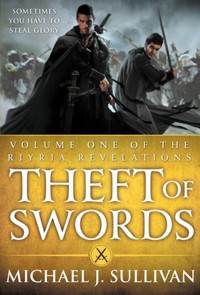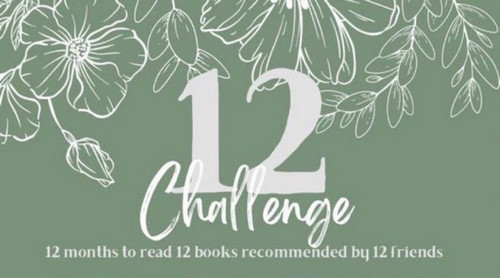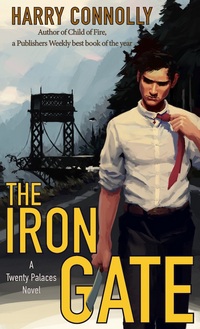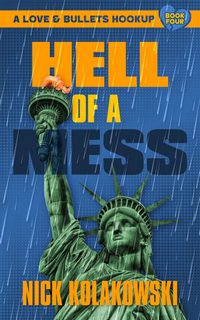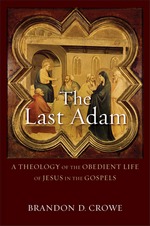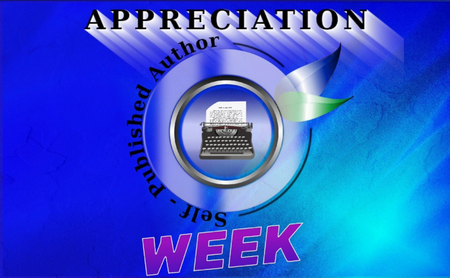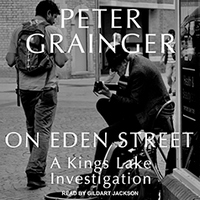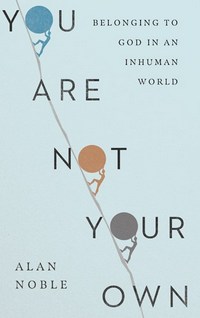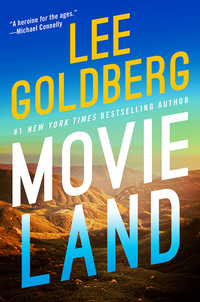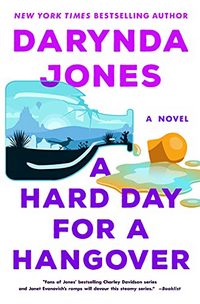 A Hard Day for a Hangover
A Hard Day for a Hangover
DETAILS: Series: Sunshine Vicram, #3 Publisher: St. Martin's Press Publication Date: December 6, 2022 Format: eARC Length: 352 pg. Read Date: November 16-19, 2022

What’s A Hard Day for a Hangover About?
Wow, this is hard to do. This is the third book in a trilogy, so let’s start off with this—all the ongoing storylines are progressing—barrelling to some sort of conclusion, we get to know everyone a little better, we see the ramifications and ripple effects of the deaths, arrests, plots, and everything else from book 1 and 2, secrets are revealed, lives are changed, and….well, it’s a third book. A lot happens, many things end, and some things start.
There are a couple of new/book-specific plotlines: the town flasher gets stabbed by an unlikely weapon; a prisoner escapes from state custody, which leads to some uncomfortable questions for Sherrif Vicram; someone breaks into the home of one of the town’s elderly residents (and she wants it covered up); a young woman is found beaten and hanging on for dear life—and she may not be the first woman in that situation; and a group of grade schoolers starts a boy band (you won’t believe which of those storylines intersect).
All in all, this is a bad week for Sunny to start hungover.
Hot Ones
I’m not a die-hard fan, but my wife and I watch a lot of Hot Ones—and we frequently buy and use the sauces we see on the show. If you don’t know what I’m talking about, you should fix that, and this illustration won’t make much sense. Sorry about that.
When I’m eating those sauces, I generally prefer the ones that are in the 1-3 slots, but occasionally, I can enjoy up to a 5 (and, yes, I’ve eaten sauces in all 10 spots—and have consumed “The Last Dab” more than once). If you convert Hot Ones‘s sauces into sex scenes in books, I think you’d find my tastes for those pretty well align. Keep things mild, close the door before things go too far, and let these people have some privacy.
Jones clearly has no designs to do anything like that. This book (like the rest of the series) is definitely not erotica—but it’s far too spicy for my taste. It’s not so distasteful that I have to stop reading, but my skim-reflex does kick in. As I said when I talked about A Good Day for Chardonnay, All I could think of as I read those sections was, “My mom is going to read this.” She’s going to read it because I bought her the first book. Not only is she going to read this book, but she’s also going to know that I read those scenes. And then I wanted to burst into flames.
I would guess that there are fewer spicey scenes in this book, but they rank higher on the Scoville scale. That’s going to please some (most?) fans, but others should know that going in.
Too Much?
Like the previous two books, Jones keeps the action jumping back and forth between Sunny and Auri, from case to case, or from case to personal arc constantly. And every time you think you’re about to settle into one of the stories for a while, she yanks the focus from you to something else (quite possibly something you’d forgotten was going on). There are times I felt like a lab dropped into a herd of squirrels, never sure what I should be focused on because there were so many things to watch.
And, on the whole, I found this as effective and fun as before. I don’t think Jones could write a boring story, but I’m not sure because she never gives you the chance to start to get bored with a storyline, before she changes things.
But…I’m not sure it was the right choice for this book. She’d given us so many great characters, so many wonderful ideas and plots, plus the new ones we that she introduced in this novel. I think it was just too much. There were (at least) two great characters that we never got to see this whole novel—they were mentioned, but the life-changing nature of what transpired in the storyline they’re attached to could’ve used their presence. Mostly, I’m bothered because one of them was one of the brightest rays of sunshine in the series (and in this series, that’s saying something).*
* I take that back. Sort of. One of the two I’m thinking of shows up for one scene. The fact that I remembered this just before publishing both illustrates what I said about this being overstuffed and undercuts my complaint.
Then there are storylines that seem to be given short-shrift—I can’t get into specifics without spoilers—but there were a couple of storylines that we’d spent so much time over the previous two books that I expected something major to occur here—but we get token bits of instead. That’s largely true for some of the storylines introduced in these pages, too.
Still, there’s just so much happening—so much to enjoy and get caught up in—that other than the absence of that bright ray of sunshine I mentioned, I didn’t notice and/or care about this until I sat down to think about and write about the book. I do think that this novel could’ve benefited from another 70-100 pages to give us all the characters readers expect to see and give adequate space for all the storylines. But in 350 pages for Jones to accomplish all that she does is an impressive feat and I don’t want to complain about that.
I guess I’m just feeling like someone who goes to a concert for a favorite band and they don’t play as many of their hits that you wanted them to, just most of them—and seemed to cut off the encore a little sooner than you’d hoped.
So, what did I think about A Hard Day for a Hangover?
I had such a blast with this. I seriously didn’t want it to end—not just because of what I talked about in the last section—but unless this trilogy spawns a sequel or becomes a longer series, this is the end of the road for these characters. I don’t want to be done with them—especially not Auri and her friends. We’ve gone so far with all of these characters and I want to see what happens to them next.
That doesn’t seem fair to this book—it’s funny, it’s charming, it’s sweet—probably sweeter than the rest just because of where various storylines resolve. Even the silly raccoon storyline will elicit a few “awwww”s. The banter between Sunny and Auri is as great as ever—ditto for Quincy and Sunny. I don’t need plots, Jones can just release occasional 30-40 page collections of conversations between those pairs every now and then as they go about their daily lives, and I’ll buy every one.
The mysteries were resolved nicely (and I got one pretty large surprise along the way)—although I thought the missing prisoner story was resolved a bit too neatly (space issue, I’m sure). It’d be easy to overlook most of those stories in the midst of all the other stuff going on, and that’d be a shame—Jones really can tell a mystery story well and I hope she returns to the genre soon.
I’m honestly at a loss for what to say beyond this—if you’ve read A Bad Day for Sunshine and A Good Day for Chardonnay, of course, you’re going to want to read this—and you’ll be so glad that you did. If you haven’t read the previous novels—do not start here, go back and start from A Bad Day and you’ll thank me. This book—like the series—is a little bit Moonlighting, it’s a little bit Veronica Mars, it’s a little bit Gilmore Girls, and it’s a lot of warm-hearted fun.
Disclaimer: I received this eARC from St. Martin’s Press via NetGalley in exchange for this post—thanks to both for this.

This post contains an affiliate link. If you purchase from it, I will get a small commission at no additional cost to you. As always, the opinions expressed are my own.
![]()



